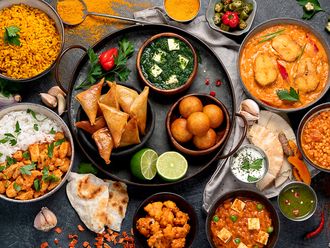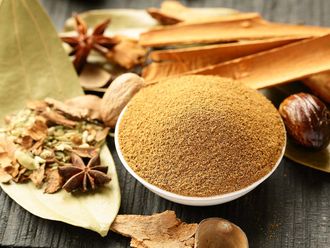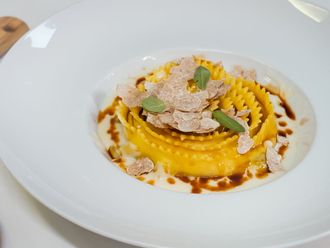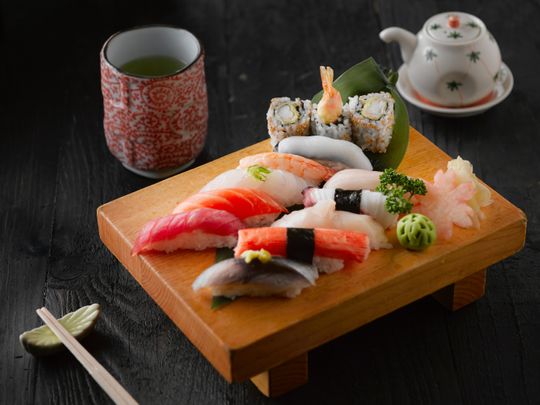
Dubai: Mottainai (もったいない), in Japanese means to not waste anything worthy. This philosophy resonates with the Japanese way of life, of which food is at the heart.
From holding chopsticks like how you would hold a pencil, to Chanoyu - the ritualised tea drinking ceremony in Japan, in which tea is consumed in a dedicated space and with detailed processes, there is more to Japanese food than meets the eye.
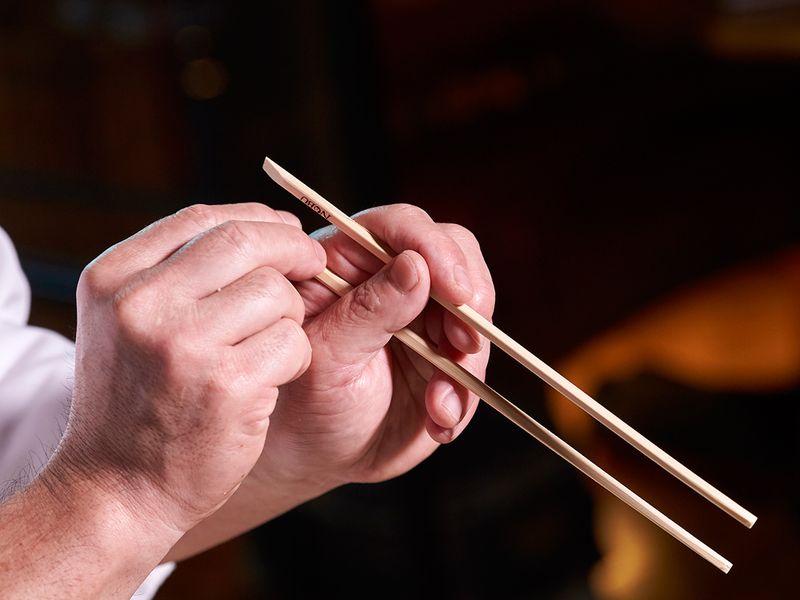
At this point in time, the world is headed towards creating a sustainable future. One of the sub themes for Expo 2020 Dubai being – Sustainability, is the best example of it. There is paradigm shift in the way we consume food. People are more aware of why ‘farm to table’ food deserves more money and how it is the only way going forward.
This line of thought has always been integral to the Japanese lifestyle. Lost in time and meaning, Covid-19 brought back to attention the philosophies of the land of the rising sun. People were taking out more time to be close to nature, mindful living became ‘the thing’ and trying to roll the perfect sushi was beyond exotic. We were looking back in time to learn to take a step foward.
Unesco honours traditional Japanese food philosophy
Japanese food is based on a certain principle that even Unesco or the United Nations Educational, Scientific and Cultural Organisation mentions it proudly. It is called – Washoku, a social practice based on a set of skills, knowledge and traditional approach of how food is produced, processed, prepared and consumed. And this principle is meant to respect nature and the sustainable use of natural resources.
It is a century old cooking practice where a meal consists of a simple preparation of rice, soups, sides and tsukemono (Japanese pickles), prepared with seasonal ingredients. Modern Japanese food consists of sushi, kobe beef steaks and ramen. However, it’s at the local inns in Japan called – Ryokans that one get the traditional culinary experience of washoku.
The dishes served in this meal reflect the four seasons that Japan has – spring, summer, fall and winter. Saying Itadakimasu (I receive this meal) before a meal and Gochisousama (thank you for the meal) after, is the Japanese way of expressing gratitude to nature for the food served on table.
This food philosophy is deeply rooted in Japan’s indigenous faith of Shintoism, which is based on kami. This means that every natural and manmade object has its own spirit and should be treated respectfully.
It is the inter-connectedness of philosophy, culture and belief that makes Japanese food appear ‘cool’ or intriguing and draws a lot of visitors to its country.
An expat’s food trail in Japan
Karishma Nandkeolyar, Parenting Editor
My first-ever meal in Japan was an onigiri – or a rice ball tucked into a seaweed pocket with a center of some sort of pickled fish. To be honest, I did not quite enjoy it.
This chain of events would continue – I would go to a restaurant and point to a dish (there were photos on the menus) and when it would come, it would bring with it a ‘taste of the sea’. After a few days of this and finally eating donuts out of vending machines, I was determined that I would find something in the cuisine I liked – after all, how could I, a Japanophile, not find something here that would work for my taste buds?
And so I went meandering into the little lanes in Kyoto’s beautiful Gion district, where women in kimonos – dressed like Geishas – brushed past and the cherry blossoms swung overhead against a pale grey sky. A few drops of cool water would spill from the sky every once in a while as I wandered, getting hungrier and hungrier – until I came across a small busy café that overlooked a cherry blossom tree. I sat there, overlooking the street, and as pink petals sailed in the breeze, I tucked into a plate of curry. The curry was milder than the fire-y Indian fare I was used to, but the spices seemed familiar. This dish would become a staple for the next two weeks along with chicken katsu, sandwiches and sausages on sticks.
There was kaiseki – or the many course set - that introduced me to shabu shabu, ramen and nabe (hot pot). There was Kobe beef, which was grilled to perfection and melted on my tongue. There was street-side yakisoba and freshly made gyoza with paper-thin wrapping. To think I’d been planning to find a spot that did international cuisine!
The dishes were served eloquently, in bite-sized, artistic shapes, with a chopstick held just so by the side of the plate. Some things, of course, didn’t make my list of the must-haves – fresh, cold soba noodles with shrimp tempura and miso soup, served on a bamboo slate looked beautiful but tasted of seaweed (not something I’m used to).
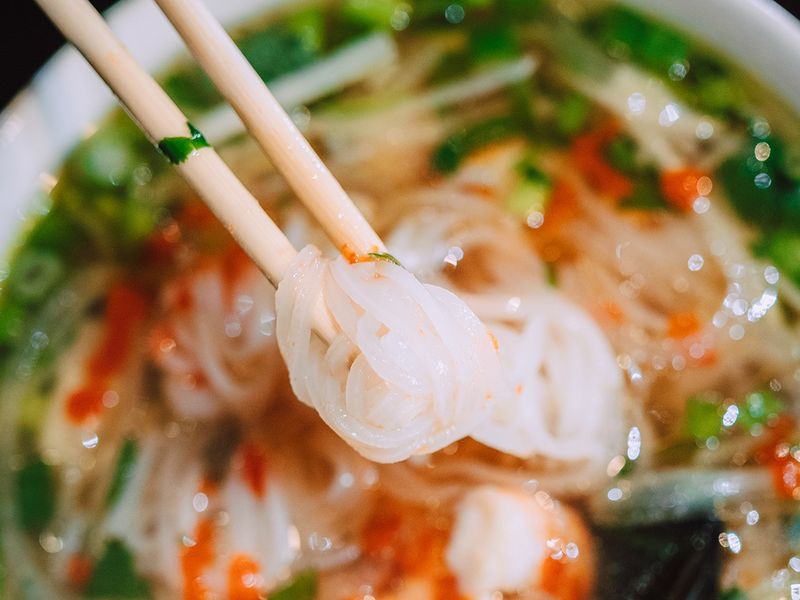
But the delicious definitely outweighed the unpalatable.
Japan was where I learned that steaming okra with onion releases the taste of vegetables in a sweet manner and I learned that if you went to the right spot, you could have a miso soup that was hot and a tad spicy. And where I learned that eating a hot bun from a supermarket in a garden filled with deer (in Nara) brings peace – and a rush of the animals.
I went to Japan and didn’t eat what Nippon fare is most famous for – sushi. But no matter, Japan is so much more than just one thing. And so is its cuisine.
Anime and its influence on spreading Japanese food culture
Sraddha Sabu, Staff Writer
A cheery chorus of ‘Itadakimasu! (Japanese for ‘I will humbly receive it’, said to show appreciation before the meal), the resounding clap as palms are brought together around the table, followed by little bows before the chopsticks are picked up to relish a succulent-looking feast - this a classic scene from Japanese anime productions that UAE viewers have enjoyed over the years. As the characters dig in, you often see cheeks blush a happy pink and content smiles all around – and when the meal ends, a thank-you -‘Gochisousama” for all the hard work that went into making the meal. It is a wholesome scene, one wants to join in.
In fact, a 2008 study by a Phd student at Turkey’s DEU Fine Arts institute found that the attractive appearance of food in Japanese anime using different animation technique also impressed viewers and aroused their curiosity – leading to inspired attempts to recreate them worldwide. Steaming bowls of savoury ramen that Naruto worships through all 700+ episodes of the famed series are a universal favourite. Neatly arranged colourful bento lunchboxes - my favourite example being a funny ‘character’ lunch made for Fairy Tail’s Gray, an ice mage, as an attempt to win his heart – Studio Ghibli’s landmark film My Neighbour Totoro sees little 10-year-old Satsuki lovingly making them for her baby sister too, sushi or little rice balls or onigiri munched on happily are also popular. And of course, a scrumptious variety of meat and seafood dishes.
In the Middle East, anime has actually been a beloved part of children’s lives since the 1980s, when local government TV channels would air anime dubbed in Arabic, post-school timings. Arabian Nights: The Adventures of Sinbad, that first aired in 1975, Captain Majid (originally Captain Tsubasa), a story about football, Grendizer that charts the story of an alien robot that has to save the world from enemy attack, Detective Conan ( Al Mohakek Conan) are some early favourites in the Arab world.
So much so that back in 2013, Abu Dhabi-based Alter Ego productions created the first UAE-based anime – Torkaizer. It is a series that follows an Emirati boy who has to save the world from alien invasion. Now anime movies are released in theatres nationwide, collections of graphic manga novels are available in Kinokuniya, Virgin megastore, Borders and more, and with a fleet of beloved Japanese restaurants as well, the culture and cuisine has become a familiar and fond prospect for UAE residents.
For me too - If I were to recall one thing that made me rethink food and the fact that each ingredient is unique, grown and flown in from different parts of the globe, it is the Japanese anime show, Shokugeki no Soma or Food wars. The 5-season series sees student chefs from across the world congregate in an elite culinary institute in Japan to train and battle (the cooking contests are as intense as any combat showdown, complete with superhero music and knife flourishes) for culinary prowess. Every dish is an epiphany – for example, a good seafood soup could see the taster swim through the ocean, dance amongst the spices, skip through a field of the relevant vegetable crop in ecstasy. Not to mention the immaculate visuals of dishes.
And so gradually, I was hooked. At university in the UK, my comfort food after tough exam periods was a katsu curry bowl, with a bubble tea on the side. I had a birthday dinner for my 18th at a Japanese restaurant there, feeling that feasting on delicious sushi plates was an absolute treat. I aim to visit Japan one day, but until then shall frequent sushi places, occasionally watching Yuru camp’s adorable middle schoolers enjoy hotpot under a moonlit Mount Fuji.
Rare seafood, elaborate menus: Japanese food brings luxury
Falah Gulzar, Deputy Social Media Editor
Whether its celebrating your birthday with friends indulging in some sushi or having a live cooking experience called teppanyaki (teppan means iron plate and yaki means grilled) with the family, Japanese culinary experiences are only growing in popularity.
Moreover, going to Japanese restaurants in many cities have become synonymous with maintaining a luxurious lifestyle.
Maybe in recent times the on-camera visits by Los Angeles-based reality stars like the Kardashians or glamourous women from The Real Housewives franchise are to be credited for the promotion of Japanese eateries. Nevertheless, the cuisine, from the expensive ingredients it utilises to the elaborate experiences it provides, has been forever extravagant.
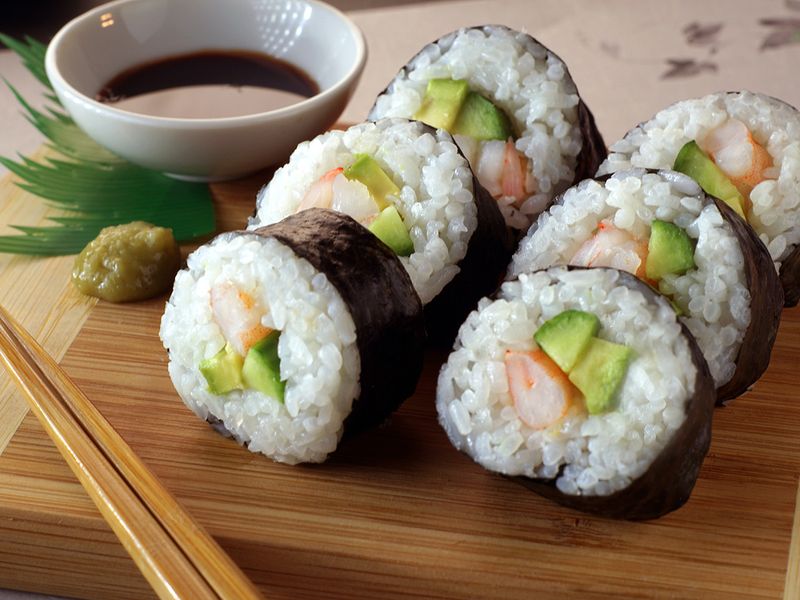
It’s well-known that the Japanese have a taste for expensive ingredients. Some of their high-grade wagyu beef can cost up to $200 (Dh 734) per pound. It’s the same with their fruits, which are carefully grown and harvested to have the sweetest taste and some are even shaped differently – Google “White strawberries” or “square watermelons”.
Speaking of fruits and vegetables, Japanese cuisine has also become a favourite of many because it is very suitable to those with specific dietary preferences and restrictions. The clean flavours and generous use of vegetables provides ample of options for vegetarians and vegans – and veganism is on the rise, especially amongst affluent groups.
In Dubai, new Japanese eateries are virtually springing up every weekend because there is no lack of people who enjoy a good show, rare ingredients and fine dining in the city.
Many of these dishes use produce, seafood, meat and spices, which have to be imported. All in all, it’s clear that the ‘Japanese food wave’ is here to stay across the world. The classification of ‘Washoku’ (traditional Japanese cuisine) as an Intangible Cultural Heritage by Unesco in 2013, was a clear indication of that.
From Konnichiwa (Hello in Japanese) to ‘Cool Japan’
Sahar Ejaz, Staff Writer
Like me, if you grew up on Tumblr between the years 2010 and 2011 – fed on its aesthetic ideals, learned what was deemed cool or not – then you might agree with the lure of Japan. The social site had us reblogging pictures of an empty hair salon in the streets of Ikebukuro just because its signboard was written in Hiragana. Let’s not forget the atmospheric clicks taken by film cameras. There is something inexplicably cool about the sun-lit houses on the sloping roads of Kagurazaka, bustling with life but in a quiet, subdued fashion.
I remember feeling another level of Zen during my binge of the Japanese film series ‘Little Forest’. Set in rural Tohoku, the four-hour series chronicles the story of a young woman who escapes the city life to find comfort in the natural environment around her. There are long stretches of silence, and surprisingly, these were my favourite. She spends most of her day preparing her next meal – from sowing the land to harvesting, from chopping to cooking, every visual detail was striking and soothing.
The cultural pull is neither a coincidence nor a personal preference. It is part of Japan’s image branding post World War II, broadly termed ‘Cool Japan’. And one of the pop cultural elements deliberately promoted is something called the ‘B-kyuu gurume’ or the B-Class Gourmet. A food ‘genre’ in its own right, the affordable, aesthetically pleasing street foods like people-favourite ramen, yakisoba and katsu are distinctly Japanese. When the image is sold through cosy, crammed eateries at the end of the street, the urge to experience it for yourself is strong.
TikTok is rife with such hotspots. Those travelling often take three-minute clips of the coolest places to grab a quick bite at – and bonus points for the restaurants if they offer self-service. Thousands leave comments, expressing the desire to ‘pack their bags and move to Japan’ because the dining experience is cheap, tasty and non-intrusive – but of course, the aesthetics are not too far behind.
The Japanese food wave in the UAE
Sharon Benjamin, Feature Writer
UAE’s love for Japanese cuisine has gone beyond just sushi. How? Well, the influences are a plenty and so is the food. Food by Gulf News caught up with Japanese restaurant Ikigai in Dubai and here’s what Chef Ted Shin said: “I’ve been living in the UAE for the past 10 years and I have observed the steady growth and increase in popularity of the Japanese cuisine over the years.
“There was a time when Japanese cuisine was considered a very unique dining experience available at only certain well-known establishments, which did not particularly cater to a variety of consumers.
“However, in the last six years, there has been a significant growth of Japanese cuisine in the UAE, taking it to the peak of its popularity among the consumers here. There are numerous Japanese restaurants across the country at various locations that is available to a range of consumers.”
“In the UAE, I would say the Salmon Maki, Salmon Nigiri, and Bluefin Tune Otoro along with the Japanese wagyu dishes are most commonly ordered by guests. But there’s different styles to eating Japanese food as well… People often think that they must dip the rice portion of the Nigiri in soy before consuming it, however that is the incorrect way of eating Nigiri. The right way is to dip the meat side of the Nigiri in soy and then consume it. The same goes for Maki – add some ginger in soy and place that on top of the Maki and then have the delicious roll.
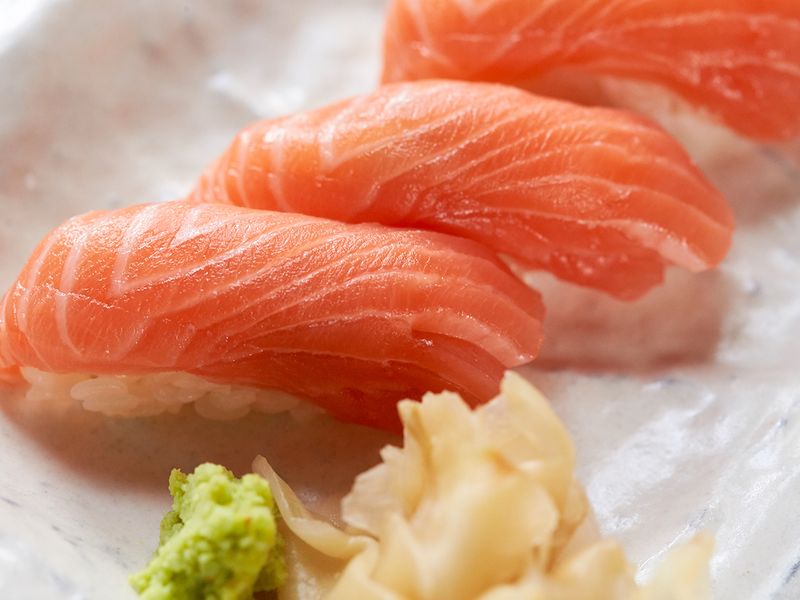
“But the most crucial part of understanding the way people around the world and in the UAE have adapted to Japanese cuisine is by first recognising the difference between authentic Japanese and common Japanese cuisine.
“Many Japanese restaurants incorporate other cuisines in their Japanese menu or recreate Japanese dishes with their own twists to help their guests easily adapt to the different style of food preparations and its flavours. This has been very successful in the UAE, and now many consumers are interested to try authentic Japanese cuisine as well.”
Food by Gulf News also met 29-year-old assistant manager Chizuru Komatsu from Sushiro – an authentic Japanese restaurant, which opened its first shop in the UAE at Expo 2020 Dubai.
"In Japan, sushi in particular, was always considered ‘fancy food’. However, times have changed and it’s become more reasonable in terms of cost and has also become easily accessible. While sushi is more widely popular, a lot of families who have children tend to buy it less, because it’s hard for children to consume raw fish at a young age. There’s also been a lot of influence, from social media, what you watch on television and other platforms. Japanese food has played quite a major role."
“In our restaurant, we have tried to bring the true dining experience… and it’s more than just sushi – there’s tempura, umami, wasabi, udon, ramen – all of which have been moderated to meet halal standards. But we’ve also designed our restaurant in such a way that it gives our customer a feel of what it is to dine in Japan. So, we have a running crane which delivers the food to the customer directly, we have separate booths for diners and more,” she further added.
An influence of sorts
For 41-year-old Japanese expat Yuka, the Japanese dining scene in Dubai has always mirrored the izakaya form of dining. When translated, izakya means stay, drink and dine. “A lot of people in Dubai generally resort to hotels and other places that have an exclusive outlet to eat and drink from Japan’s cuisine. However, it’s very rarely found here, I feel. It’s also because the flavours are so different from what is served back home. In terms of influences, I feel most of why Japanese food is popular is because many people – not just Japanese people – have resorted to reading manga and watching anime. These entertainment outlets showcase food so well even though it’s drawn and I think that captures the attention of every viewer.”
Another Japanese expat, 43-year-old - Tomoko, feels that the cuisine has grown to popularity due to the acceptance and open-mindedness of the country. “I feel the UAE has always had several opportunities, especially since the people over here love to try out new things. While that is very welcoming, I do feel like there’s a high variation in taste, especially because the fish variety is different, and it’s more of frozen food than right out of the ocean. Not to mention, cooking styles also differ by a large margin.”
Salem, a 24-year-old Emirati said: “I love trying out new cuisines, so I was open to food from several cultures. I didn’t think twice before eating Japanese food and I’ve heard a lot about it, so here I am with my Japanese food".
Do you love Japanese food as much as the people in UAE? Tell us about your experience or share your recipes at food@gulfnews.com









